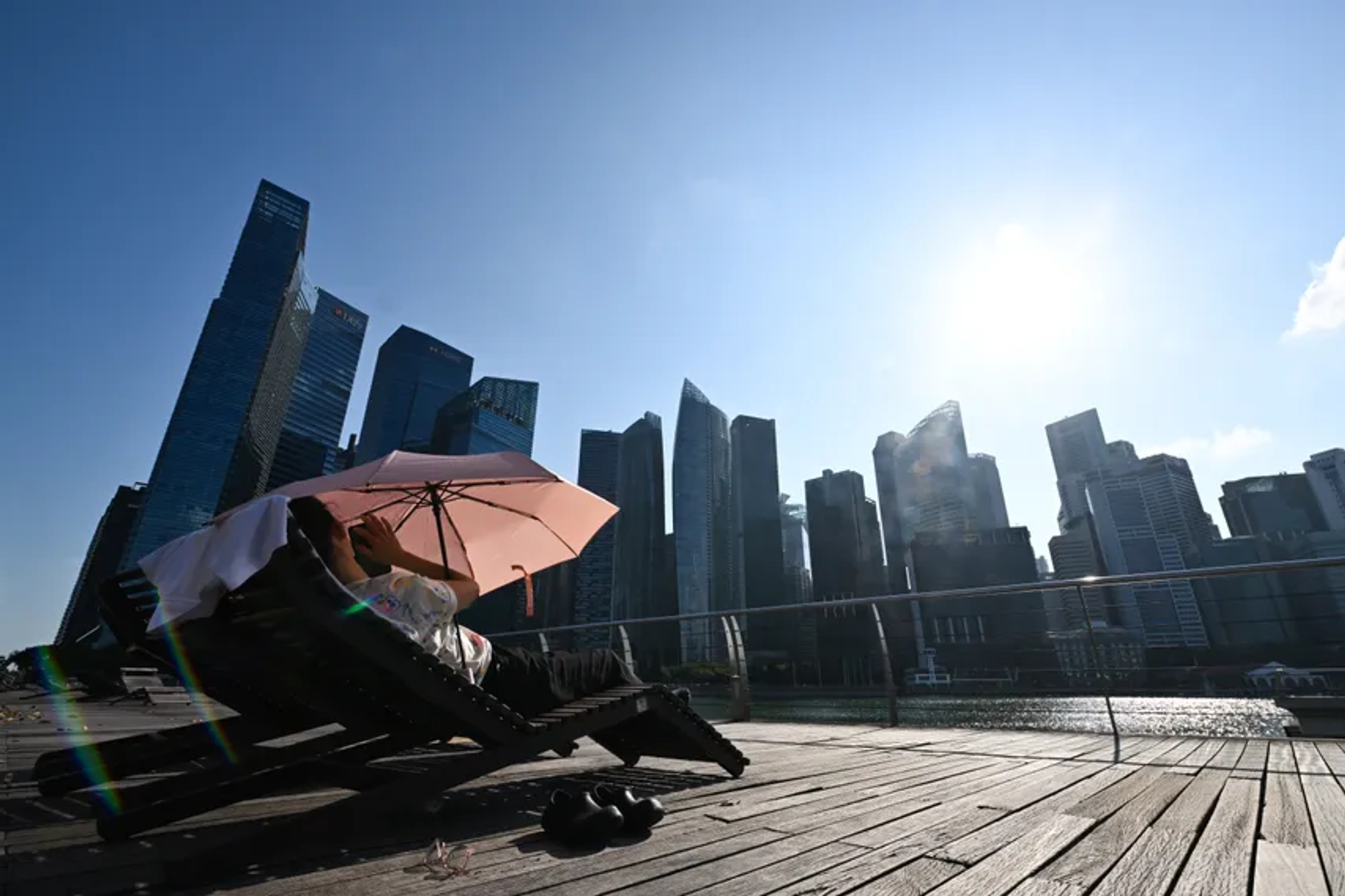
More wet and dry weather extremes, faster rise in sea levels projected by end of century
Published Fri, Jan 5, 2024 · 12:00 PM
“Very hot” days, where daily maximum temperatures exceed 35 degrees Celsius, could become a "new normal". PHOTO: BT FILE
SINGAPORE’S mean daily temperature could rise as much as 5 degrees Celsius to 32.9 deg C by 2100 if the world drives development with fossil fuels, a new climate change study warned.
Shifting to sustainable development would mitigate this. If greenhouse gas emissions are effectively managed, Singapore’s mean daily temperatures would instead fall between 28.5 and 29.5 deg C – slightly higher than the present 27.9 deg C mean daily temperature.
These are among the key findings of the Third National Climate Change Study (V3), released by the Centre for Climate Research Singapore (CCRS) on Friday (Jan 5).
V3’s projections are based on three scenarios: low, medium and high emissions. The low-emissions scenario is based on net-zero targets being achieved after 2050. The medium one assumes historical patterns of development continue, and the high-emissions scenario centres on energy-intensive, fossil fuel-based development.
Climate change is an existential challenge for Singapore, said Minister for Sustainability and the Environment Grace Fu, who announced V3’s findings at the Marina Bay Sands Expo and Convention Centre on Friday.
“V3 shows that we will have to contend with more extreme climate conditions: higher temperatures, heavier rainfalls, and longer and more frequent dry spells. These climate conditions may also lead to other indirect climate challenges, including disruptions to water and food,” she said.
Under the high-emissions scenario, Singapore’s annual mean temperatures are projected to rise by 0.55 deg C per decade by 2100. This is in sharp contrast to the past 40 years, when the country’s annual mean temperature rose by 0.24 deg C per decade.
In addition, “very hot” days, when daily maximum temperatures exceed 35 deg C, are set to become a “new normal”, the study found. Singapore experienced 21.4 such days per year on average in the last 40 years. By 2100, the country is projected to experience 41 such days annually at best, and 351 at worst.
The island is also set to have more “warm nights”, when temperatures exceed 26.3 deg C. From an average of 76 such nights per year in the last 40 years, Singapore could experience warm nights almost throughout the whole year by 2100.
Wet and dry extremes
Beyond hotter days, the study projects that Singapore could experience more extremes in wet and dry days by the century’s end.
From November to January, during the north-east monsoon wet season, total rainfall is expected to occasionally exceed the historical high of 1,507 mm recorded in 2006. In April and May, there could be increases in extreme daily rainfall of between 6 and 92 per cent.
On the other extreme, during the south-west monsoon dry season from June to August, total rainfall could be significantly below the historical low of 314 mm recorded in 1997. The study expects that this could occur around once every three years.
Dry spells could also be more frequent and last longer by 2100; Singapore could experience a dry spell between every 10 months to five years.
Extreme weather will be accompanied by rising sea levels. The mean sea level around Singapore is projected to rise by 0.23 m to 1.15 m by the end of the century, and by up to around 2 m by 2150 under the high-emissions scenario.
“This increase from the previous V2 projections – around 1 m by end-century – is primarily due to a better understanding of the contribution of the melting of the Antarctic ice sheets to global sea levels,” CCRS said.
Global collaboration
V3’s projections are consistent with global scientists’ view of climate change, under the United Nations Intergovernmental Panel on Climate Change’s Sixth Assessment Report.
Based on the findings, the government will strengthen its climate adaptation plans and look out for new climate risks, said Fu.
Singapore has thus far used passive design strategies to cool the environment, such as by intensifying greenery in urban areas and orienting buildings along the north-south direction to reduce heat gain.
It is now using measurements, modelling and simulation to improve city design, and to enhance knowledge of urban heat and its impact on human health. Singapore last year launched a heat stress advisory to warn the public about rising temperatures.
The private sector also has a part to play to mitigate rising temperatures. “Businesses can lead the way by adopting more sustainable practices, tracking their carbon footprint and setting a net-zero target year,” said Fu.
Professor Winston Chow, a climate scientist at the Singapore Management University, told reporters that the detailed projections from V3 can help businesses with managing operational and capital costs, which might increase in the years to come with climate hazards.
“So it’s to their interest to utilise this information to engage with the climate-science community and the modelling community, to see how the diminishing of risks can happen,” he said.
Singapore’s meteorological service will work on joint research with international entities and scientists using V3 data. The data will be shared with Asean member states at a later stage.
Separately, the National Environment Agency on Friday launched a second grant call under its Climate Impact Science Research Programme, for new research proposals on food security, impact on human health, water resources, sea-level rise and effects on maritime infrastructure and the transport sector.
Eight projects were awarded in December 2023 under the programme’s first grant call. These projects will draw on V3 results to look into areas such as the impact of climate change on vector-borne diseases in Singapore and changes in the tropical forest landscape.